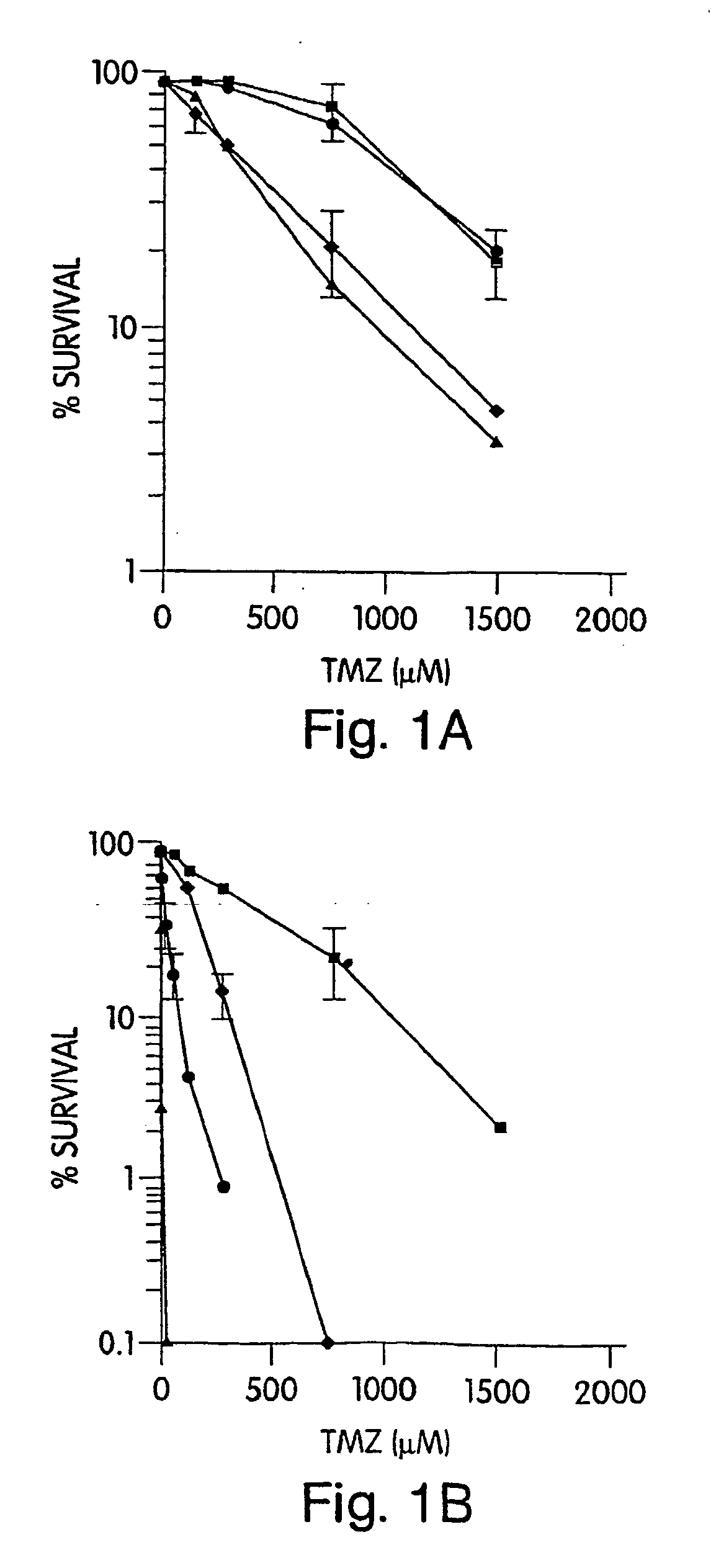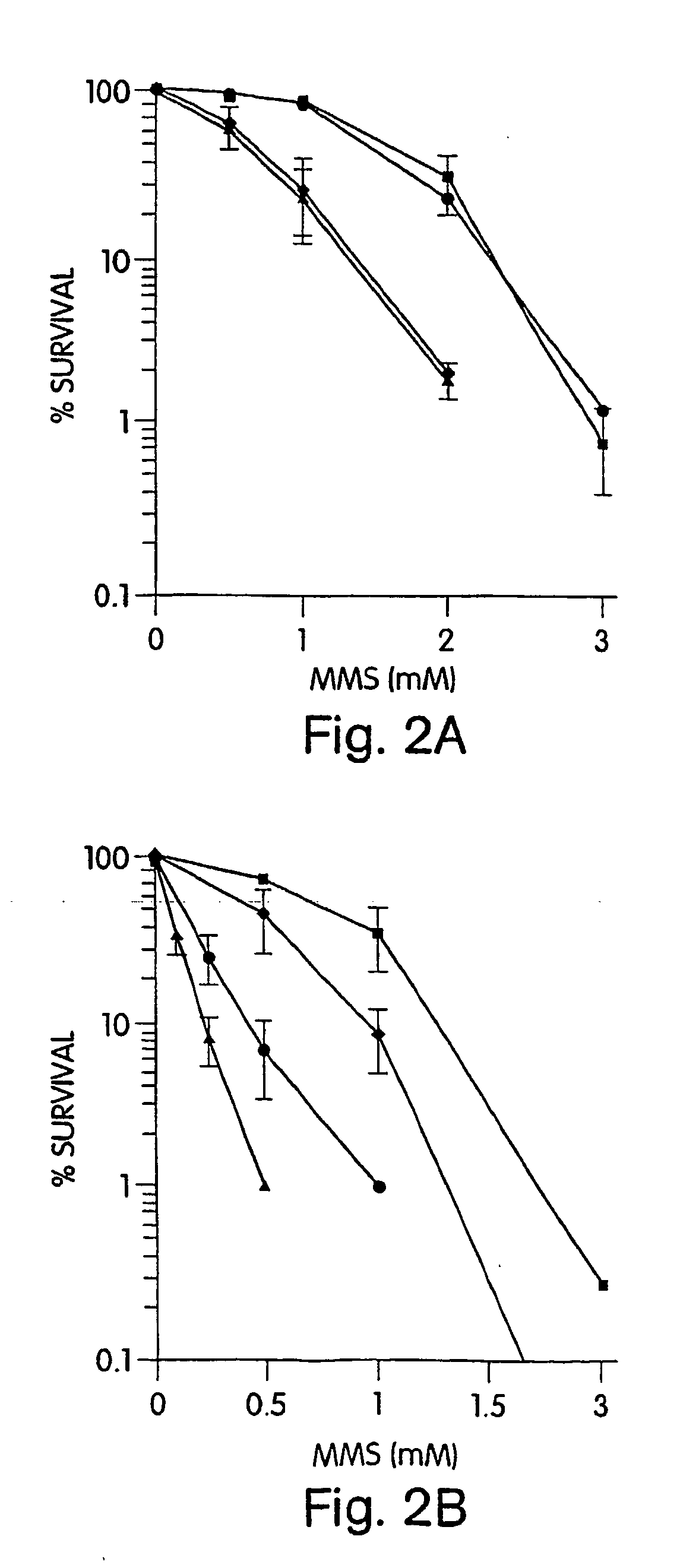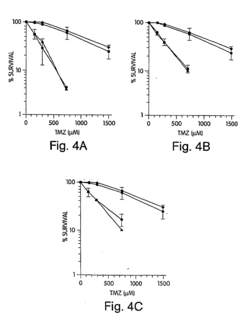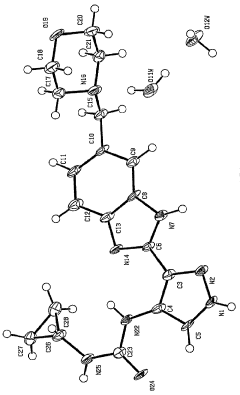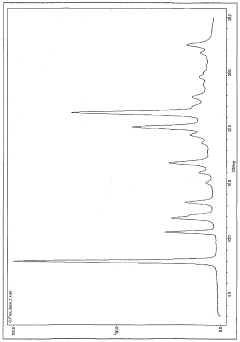Applications of Alkylating Agents in Oncological Treatments
JUL 15, 20259 MIN READ
Generate Your Research Report Instantly with AI Agent
Patsnap Eureka helps you evaluate technical feasibility & market potential.
Alkylating Agents in Cancer Treatment: Background and Objectives
Alkylating agents have been a cornerstone in cancer treatment for over seven decades, marking a significant milestone in the evolution of oncological therapies. These compounds were first discovered in the 1940s as a result of observations made during World War I, where soldiers exposed to mustard gas experienced bone marrow suppression and lymphoid tissue damage. This serendipitous finding led to the development of nitrogen mustard as the first chemotherapeutic agent, initiating a new era in cancer treatment.
The primary mechanism of action for alkylating agents involves their ability to form covalent bonds with DNA, leading to cross-linking of DNA strands. This process interferes with DNA replication and transcription, ultimately resulting in cell death. Due to their non-specific nature, alkylating agents affect both cancerous and healthy cells, which contributes to their efficacy as well as their side effects.
Over the years, various classes of alkylating agents have been developed, including nitrogen mustards, nitrosoureas, alkyl sulfonates, triazenes, and platinum-based compounds. Each class has unique properties and applications in treating different types of cancers. The ongoing research in this field aims to enhance the specificity and efficacy of these agents while minimizing their toxicity to normal tissues.
The evolution of alkylating agents in cancer treatment has been marked by continuous improvements in drug design and delivery methods. Recent advancements focus on developing targeted alkylating agents that can selectively attack cancer cells, reducing collateral damage to healthy tissues. Additionally, combination therapies involving alkylating agents and other treatment modalities, such as immunotherapy or targeted molecular therapies, are being explored to improve overall treatment outcomes.
The primary objective of current research in alkylating agents is to overcome the challenges associated with their use, including drug resistance, long-term side effects, and secondary malignancies. Efforts are being made to develop novel alkylating agents with improved pharmacokinetic profiles and reduced systemic toxicity. Furthermore, there is a growing interest in understanding the molecular mechanisms underlying the efficacy of these agents in different cancer types, which could lead to more personalized treatment approaches.
As we look towards the future, the role of alkylating agents in cancer treatment continues to evolve. While newer targeted therapies have emerged, alkylating agents remain an essential component of many treatment regimens, particularly for aggressive and hard-to-treat cancers. The ongoing research aims to refine their use, develop more effective combinations, and explore innovative delivery methods to maximize their therapeutic potential while minimizing adverse effects.
The primary mechanism of action for alkylating agents involves their ability to form covalent bonds with DNA, leading to cross-linking of DNA strands. This process interferes with DNA replication and transcription, ultimately resulting in cell death. Due to their non-specific nature, alkylating agents affect both cancerous and healthy cells, which contributes to their efficacy as well as their side effects.
Over the years, various classes of alkylating agents have been developed, including nitrogen mustards, nitrosoureas, alkyl sulfonates, triazenes, and platinum-based compounds. Each class has unique properties and applications in treating different types of cancers. The ongoing research in this field aims to enhance the specificity and efficacy of these agents while minimizing their toxicity to normal tissues.
The evolution of alkylating agents in cancer treatment has been marked by continuous improvements in drug design and delivery methods. Recent advancements focus on developing targeted alkylating agents that can selectively attack cancer cells, reducing collateral damage to healthy tissues. Additionally, combination therapies involving alkylating agents and other treatment modalities, such as immunotherapy or targeted molecular therapies, are being explored to improve overall treatment outcomes.
The primary objective of current research in alkylating agents is to overcome the challenges associated with their use, including drug resistance, long-term side effects, and secondary malignancies. Efforts are being made to develop novel alkylating agents with improved pharmacokinetic profiles and reduced systemic toxicity. Furthermore, there is a growing interest in understanding the molecular mechanisms underlying the efficacy of these agents in different cancer types, which could lead to more personalized treatment approaches.
As we look towards the future, the role of alkylating agents in cancer treatment continues to evolve. While newer targeted therapies have emerged, alkylating agents remain an essential component of many treatment regimens, particularly for aggressive and hard-to-treat cancers. The ongoing research aims to refine their use, develop more effective combinations, and explore innovative delivery methods to maximize their therapeutic potential while minimizing adverse effects.
Market Analysis of Alkylating Agent-Based Therapies
The market for alkylating agent-based therapies in oncological treatments has shown significant growth and evolution over the past decade. These agents, which work by damaging DNA and preventing cancer cell replication, have become a cornerstone in various cancer treatment regimens. The global market for alkylating agents is projected to continue its upward trajectory, driven by the increasing incidence of cancer worldwide and the expanding applications of these drugs in combination therapies.
Alkylating agents are primarily used in the treatment of several types of cancers, including leukemia, lymphoma, multiple myeloma, and solid tumors such as lung, breast, and ovarian cancers. The market demand for these therapies is particularly strong in regions with high cancer prevalence rates and advanced healthcare infrastructure, notably North America, Europe, and parts of Asia-Pacific.
One of the key factors driving market growth is the development of novel alkylating agents with improved efficacy and reduced side effects. Pharmaceutical companies are investing heavily in research and development to create targeted alkylating agents that can selectively attack cancer cells while minimizing damage to healthy tissues. This trend is expected to expand the application of alkylating agents to a broader range of cancer types and potentially increase their market share in oncology treatments.
The market is also benefiting from the increasing adoption of combination therapies. Alkylating agents are often used in conjunction with other cancer treatments such as immunotherapy, targeted therapy, and radiation therapy. This synergistic approach has shown promising results in clinical trials, leading to improved patient outcomes and driving demand for alkylating agent-based therapies.
However, the market faces challenges, including the high cost of treatment and the potential for severe side effects associated with alkylating agents. These factors can limit accessibility and patient compliance, particularly in developing countries with less robust healthcare systems. Additionally, the emergence of alternative cancer treatments, such as immunotherapies and targeted therapies, poses a competitive threat to the alkylating agent market.
Despite these challenges, the overall market outlook for alkylating agent-based therapies remains positive. The ongoing research into personalized medicine and the development of biomarkers to predict treatment response are expected to enhance the efficacy of alkylating agents and expand their market potential. Furthermore, the increasing focus on rare cancers and orphan drug development presents new opportunities for alkylating agent applications in niche markets.
In conclusion, the market for alkylating agent-based therapies in oncological treatments is characterized by steady growth, driven by technological advancements, expanding applications, and the rising global cancer burden. As research continues to unlock new potential for these agents, their role in cancer treatment is likely to evolve and expand, ensuring their continued relevance in the oncology market landscape.
Alkylating agents are primarily used in the treatment of several types of cancers, including leukemia, lymphoma, multiple myeloma, and solid tumors such as lung, breast, and ovarian cancers. The market demand for these therapies is particularly strong in regions with high cancer prevalence rates and advanced healthcare infrastructure, notably North America, Europe, and parts of Asia-Pacific.
One of the key factors driving market growth is the development of novel alkylating agents with improved efficacy and reduced side effects. Pharmaceutical companies are investing heavily in research and development to create targeted alkylating agents that can selectively attack cancer cells while minimizing damage to healthy tissues. This trend is expected to expand the application of alkylating agents to a broader range of cancer types and potentially increase their market share in oncology treatments.
The market is also benefiting from the increasing adoption of combination therapies. Alkylating agents are often used in conjunction with other cancer treatments such as immunotherapy, targeted therapy, and radiation therapy. This synergistic approach has shown promising results in clinical trials, leading to improved patient outcomes and driving demand for alkylating agent-based therapies.
However, the market faces challenges, including the high cost of treatment and the potential for severe side effects associated with alkylating agents. These factors can limit accessibility and patient compliance, particularly in developing countries with less robust healthcare systems. Additionally, the emergence of alternative cancer treatments, such as immunotherapies and targeted therapies, poses a competitive threat to the alkylating agent market.
Despite these challenges, the overall market outlook for alkylating agent-based therapies remains positive. The ongoing research into personalized medicine and the development of biomarkers to predict treatment response are expected to enhance the efficacy of alkylating agents and expand their market potential. Furthermore, the increasing focus on rare cancers and orphan drug development presents new opportunities for alkylating agent applications in niche markets.
In conclusion, the market for alkylating agent-based therapies in oncological treatments is characterized by steady growth, driven by technological advancements, expanding applications, and the rising global cancer burden. As research continues to unlock new potential for these agents, their role in cancer treatment is likely to evolve and expand, ensuring their continued relevance in the oncology market landscape.
Current Challenges in Alkylating Agent Applications
Despite the significant advancements in alkylating agent applications for oncological treatments, several challenges persist in their clinical use. One of the primary concerns is the non-specific nature of these agents, which can lead to unintended damage to healthy cells alongside cancer cells. This off-target effect often results in severe side effects, including bone marrow suppression, gastrointestinal toxicity, and secondary malignancies.
Another critical challenge is the development of drug resistance in cancer cells. Over time, tumor cells can acquire mechanisms to repair DNA damage caused by alkylating agents or enhance their ability to expel these drugs, rendering the treatment less effective. This resistance not only limits the long-term efficacy of alkylating agents but also necessitates the use of higher doses, further exacerbating toxicity issues.
The pharmacokinetics and pharmacodynamics of alkylating agents present additional hurdles. Achieving optimal drug concentrations at tumor sites while minimizing systemic exposure remains a significant challenge. Factors such as drug metabolism, distribution, and clearance can vary widely among patients, making it difficult to predict treatment outcomes and manage side effects effectively.
Furthermore, the potential for long-term complications, particularly the risk of therapy-related myelodysplastic syndromes and acute myeloid leukemia, poses a significant concern. These secondary malignancies can occur years after treatment, necessitating long-term follow-up and complicating risk-benefit assessments for patients and clinicians.
The heterogeneity of cancer types and individual patient responses also presents a challenge in optimizing alkylating agent therapies. Personalized medicine approaches, while promising, are still in their infancy for these treatments. Identifying reliable biomarkers to predict treatment response and toxicity remains an active area of research but has yet to be fully realized in clinical practice.
Lastly, the development of novel alkylating agents with improved specificity and reduced toxicity is an ongoing challenge. While research into targeted delivery systems and prodrug approaches shows promise, translating these innovations from the laboratory to the clinic involves significant regulatory and safety hurdles. Balancing the need for effective cancer treatment with minimizing harm to patients continues to be a central challenge in the application of alkylating agents in oncology.
Another critical challenge is the development of drug resistance in cancer cells. Over time, tumor cells can acquire mechanisms to repair DNA damage caused by alkylating agents or enhance their ability to expel these drugs, rendering the treatment less effective. This resistance not only limits the long-term efficacy of alkylating agents but also necessitates the use of higher doses, further exacerbating toxicity issues.
The pharmacokinetics and pharmacodynamics of alkylating agents present additional hurdles. Achieving optimal drug concentrations at tumor sites while minimizing systemic exposure remains a significant challenge. Factors such as drug metabolism, distribution, and clearance can vary widely among patients, making it difficult to predict treatment outcomes and manage side effects effectively.
Furthermore, the potential for long-term complications, particularly the risk of therapy-related myelodysplastic syndromes and acute myeloid leukemia, poses a significant concern. These secondary malignancies can occur years after treatment, necessitating long-term follow-up and complicating risk-benefit assessments for patients and clinicians.
The heterogeneity of cancer types and individual patient responses also presents a challenge in optimizing alkylating agent therapies. Personalized medicine approaches, while promising, are still in their infancy for these treatments. Identifying reliable biomarkers to predict treatment response and toxicity remains an active area of research but has yet to be fully realized in clinical practice.
Lastly, the development of novel alkylating agents with improved specificity and reduced toxicity is an ongoing challenge. While research into targeted delivery systems and prodrug approaches shows promise, translating these innovations from the laboratory to the clinic involves significant regulatory and safety hurdles. Balancing the need for effective cancer treatment with minimizing harm to patients continues to be a central challenge in the application of alkylating agents in oncology.
Existing Alkylating Agent Treatment Protocols
01 Synthesis and modification of alkylating agents
This category focuses on the development and modification of alkylating agents, including novel synthesis methods and structural modifications to improve their properties or efficacy. These advancements aim to create more effective or targeted alkylating agents for various applications in chemistry and pharmaceutical research.- Synthesis and modification of alkylating agents: This category focuses on the development and modification of alkylating agents, including novel synthesis methods and structural modifications to improve their properties or efficacy. These advancements aim to create more effective or targeted alkylating agents for various applications, such as in pharmaceuticals or chemical processes.
- Detection and analysis of alkylating agents: This area involves the development of methods and technologies for detecting, identifying, and analyzing alkylating agents. These techniques are crucial for assessing the presence and concentration of alkylating agents in various environments, including biological samples, environmental monitoring, and quality control in industrial processes.
- Therapeutic applications of alkylating agents: This category explores the use of alkylating agents in therapeutic applications, particularly in cancer treatment. It includes research on new alkylating agents with improved efficacy, reduced side effects, or enhanced targeting capabilities. The development of combination therapies and novel delivery methods for alkylating agents is also covered.
- Mechanisms of action and biological effects: This area focuses on understanding the mechanisms of action of alkylating agents at the molecular and cellular levels. It includes studies on their interactions with DNA, proteins, and other cellular components, as well as investigations into the biological effects and potential toxicity of these agents in various organisms and systems.
- Industrial applications and processes: This category covers the use of alkylating agents in industrial applications and processes, such as chemical synthesis, polymer production, and surface modification. It includes the development of new alkylation processes, optimization of existing methods, and the exploration of novel applications for alkylating agents in various industries.
02 Detection and analysis of alkylating agents
Methods and systems for detecting, identifying, and analyzing alkylating agents are crucial for various fields, including environmental monitoring, drug development, and quality control. This category encompasses techniques such as spectroscopy, chromatography, and biosensors designed to detect and quantify alkylating agents in different matrices.Expand Specific Solutions03 Therapeutic applications of alkylating agents
Alkylating agents play a significant role in cancer treatment and other therapeutic applications. This category covers the use of alkylating agents in chemotherapy, their mechanisms of action, and strategies to improve their efficacy while minimizing side effects. It also includes the development of novel drug delivery systems for alkylating agents.Expand Specific Solutions04 Biological effects and mechanisms of alkylating agents
Understanding the biological effects and mechanisms of alkylating agents is crucial for both their therapeutic use and assessing potential risks. This category includes research on DNA damage, cellular responses, and long-term effects of alkylation. It also covers studies on the interaction of alkylating agents with various biomolecules and cellular components.Expand Specific Solutions05 Industrial applications of alkylating agents
Alkylating agents have various industrial applications beyond their use in pharmaceuticals. This category covers the use of alkylating agents in polymer synthesis, surface modification, and other chemical processes. It includes methods for controlling alkylation reactions, improving yields, and developing environmentally friendly alkylation processes for industrial scale production.Expand Specific Solutions
Key Players in Alkylating Agent Research and Production
The field of alkylating agents in oncological treatments is in a mature stage of development, with a well-established market and proven efficacy. The global market size for alkylating agents is substantial, driven by the increasing prevalence of cancer worldwide. Technologically, the field is relatively mature, with ongoing research focused on improving efficacy and reducing side effects. Key players in this space include major pharmaceutical companies like Novartis AG and Celgene Corp., as well as specialized biotech firms such as Astex Therapeutics Ltd. and DNAtrix, Inc. Academic institutions like The Johns Hopkins University School of Medicine and the University of Florida also contribute significantly to research and development in this area.
Astex Therapeutics Ltd.
Technical Solution: Astex Therapeutics Ltd. has focused on the development of next-generation alkylating agents using their fragment-based drug discovery platform. They have designed novel small molecule alkylating agents with improved selectivity for cancer-specific targets. Astex's approach includes the development of alkylating agents that can penetrate the blood-brain barrier, addressing the challenge of treating brain tumors[7]. They have also explored the use of computational methods to predict and optimize the alkylating properties of new compounds, potentially accelerating the drug discovery process[8]. Astex has investigated the combination of their alkylating agents with epigenetic modulators to enhance therapeutic efficacy in resistant tumors[9].
Strengths: Innovative drug discovery platform, focus on targeted therapies. Weaknesses: Smaller company with limited resources compared to big pharma, potential challenges in late-stage clinical development.
Nerviano Medical Sciences S.r.l
Technical Solution: Nerviano Medical Sciences S.r.l has made significant contributions to the field of alkylating agents in oncology. They have focused on developing alkylating agents with novel mechanisms of action, aiming to overcome resistance to traditional chemotherapies. Nerviano's research includes the design of dual-action compounds that combine alkylating properties with inhibition of DNA repair mechanisms, potentially enhancing their anti-tumor effects[10]. They have also explored the use of alkylating agents in combination with targeted therapies, such as kinase inhibitors, to create more effective treatment regimens[11]. Nerviano has invested in the development of biomarkers to predict patient response to alkylating agents, aiming to personalize treatment approaches[12].
Strengths: Strong focus on innovative oncology research, expertise in medicinal chemistry. Weaknesses: Limited global presence compared to larger pharmaceutical companies, potential challenges in commercialization.
Innovative Alkylating Agent Mechanisms and Formulations
Alkylating agent combinations in the treatment of cancer
PatentInactiveUS20060241186A1
Innovation
- The use of compositions and methods that combine a chemotherapeutic agent inducing AP sites in DNA with a base excision repair (BER) inhibitor, such as methoxyamine, to enhance the therapeutic effect by inhibiting the BER pathway, thereby potentiating the anticancer agent's efficacy.
Pharmaceutical combinations of 1-cyclopropyl-3- [3- (5-m0rphoolin-4-ylmethyl-1h-benzoimidazol-2-yl) -lh-1-pyrazol- 4-yl] -urea
PatentWO2008001115A2
Innovation
- Development of novel alkylating agents with improved anti-tumor activity and reduced toxicity compared to traditional nitrogen mustards and nitrosoureas.
- Design of structural analogues of cyclophosphamide and ifosfamide with enhanced therapeutic index and reduced urotoxicity.
- Creation of new nitrosourea compounds with reduced myelosuppressive effects while maintaining potent anti-tumor activity against brain tumors and gastrointestinal neoplasms.
Regulatory Framework for Alkylating Agents in Oncology
The regulatory framework for alkylating agents in oncology is a complex and evolving landscape designed to ensure the safety and efficacy of these powerful therapeutic compounds. Regulatory bodies such as the U.S. Food and Drug Administration (FDA), the European Medicines Agency (EMA), and other national health authorities play crucial roles in overseeing the development, approval, and use of alkylating agents in cancer treatment.
At the core of this framework is the requirement for extensive preclinical and clinical testing before an alkylating agent can be approved for use in oncology. This process typically involves multiple phases of clinical trials, with a focus on demonstrating both safety and efficacy in specific cancer types. Regulatory agencies scrutinize the data from these trials, assessing the risk-benefit profile of the drug before granting market authorization.
Once approved, alkylating agents are subject to ongoing monitoring and post-market surveillance. This includes mandatory reporting of adverse events and periodic safety updates by manufacturers. Regulatory bodies may require additional studies or label changes based on emerging safety data or new indications.
The framework also encompasses guidelines for the proper handling, storage, and administration of alkylating agents, given their potential for toxicity and environmental impact. Healthcare facilities must adhere to strict protocols for the preparation and disposal of these drugs to protect both patients and healthcare workers.
Regulatory agencies have established specific guidance documents for the development of oncology drugs, including alkylating agents. These guidelines cover aspects such as trial design, endpoint selection, and patient population considerations. For instance, the FDA's guidance on clinical trial endpoints for the approval of cancer drugs provides a framework for assessing the efficacy of alkylating agents in various cancer types.
International harmonization efforts, such as those led by the International Council for Harmonisation of Technical Requirements for Pharmaceuticals for Human Use (ICH), aim to streamline the regulatory process across different regions. This facilitates global development programs for new alkylating agents and ensures consistent safety standards worldwide.
The regulatory framework also addresses the use of alkylating agents in combination therapies, an increasingly common approach in oncology. This includes guidelines for evaluating the safety and efficacy of novel combinations and requirements for demonstrating the contribution of each component to the overall treatment effect.
As personalized medicine advances, regulatory bodies are adapting their frameworks to accommodate biomarker-driven approaches in the development and use of alkylating agents. This includes guidance on companion diagnostics and the validation of predictive biomarkers that may inform patient selection or dosing strategies.
At the core of this framework is the requirement for extensive preclinical and clinical testing before an alkylating agent can be approved for use in oncology. This process typically involves multiple phases of clinical trials, with a focus on demonstrating both safety and efficacy in specific cancer types. Regulatory agencies scrutinize the data from these trials, assessing the risk-benefit profile of the drug before granting market authorization.
Once approved, alkylating agents are subject to ongoing monitoring and post-market surveillance. This includes mandatory reporting of adverse events and periodic safety updates by manufacturers. Regulatory bodies may require additional studies or label changes based on emerging safety data or new indications.
The framework also encompasses guidelines for the proper handling, storage, and administration of alkylating agents, given their potential for toxicity and environmental impact. Healthcare facilities must adhere to strict protocols for the preparation and disposal of these drugs to protect both patients and healthcare workers.
Regulatory agencies have established specific guidance documents for the development of oncology drugs, including alkylating agents. These guidelines cover aspects such as trial design, endpoint selection, and patient population considerations. For instance, the FDA's guidance on clinical trial endpoints for the approval of cancer drugs provides a framework for assessing the efficacy of alkylating agents in various cancer types.
International harmonization efforts, such as those led by the International Council for Harmonisation of Technical Requirements for Pharmaceuticals for Human Use (ICH), aim to streamline the regulatory process across different regions. This facilitates global development programs for new alkylating agents and ensures consistent safety standards worldwide.
The regulatory framework also addresses the use of alkylating agents in combination therapies, an increasingly common approach in oncology. This includes guidelines for evaluating the safety and efficacy of novel combinations and requirements for demonstrating the contribution of each component to the overall treatment effect.
As personalized medicine advances, regulatory bodies are adapting their frameworks to accommodate biomarker-driven approaches in the development and use of alkylating agents. This includes guidance on companion diagnostics and the validation of predictive biomarkers that may inform patient selection or dosing strategies.
Toxicity Management and Patient Safety Considerations
Alkylating agents, while effective in oncological treatments, pose significant toxicity risks that require careful management to ensure patient safety. The primary concern is the potential for severe side effects, including myelosuppression, which can lead to increased susceptibility to infections, anemia, and bleeding disorders. To mitigate these risks, healthcare providers must implement comprehensive toxicity management strategies.
One crucial aspect of toxicity management is regular monitoring of blood counts. Patients undergoing treatment with alkylating agents should have their complete blood count (CBC) checked frequently to detect early signs of myelosuppression. This allows for timely interventions, such as dose adjustments or temporary treatment interruptions, to prevent severe complications.
Gastrointestinal toxicity is another common side effect of alkylating agents. Patients may experience nausea, vomiting, and diarrhea, which can lead to dehydration and electrolyte imbalances. Prophylactic antiemetic medications and proper hydration protocols are essential components of patient care. Additionally, nutritional support may be necessary for patients experiencing prolonged gastrointestinal symptoms.
Alkylating agents can also cause long-term effects on fertility and increase the risk of secondary malignancies. Fertility preservation options should be discussed with patients of reproductive age before initiating treatment. Long-term follow-up and surveillance for secondary cancers are crucial aspects of patient care that extend beyond the active treatment phase.
To enhance patient safety, healthcare providers must educate patients and their caregivers about potential side effects and the importance of promptly reporting any unusual symptoms. Clear communication channels between patients and the healthcare team are essential for early detection and management of toxicities.
Personalized dosing strategies based on individual patient characteristics, such as age, renal function, and genetic factors, can help optimize treatment efficacy while minimizing toxicity. Pharmacogenomic testing may provide valuable insights into a patient's likelihood of experiencing severe side effects, allowing for more tailored treatment approaches.
Interdisciplinary collaboration is vital in managing the complex toxicity profile of alkylating agents. Oncologists should work closely with hematologists, pharmacists, and supportive care specialists to develop comprehensive care plans that address both acute and chronic toxicities. This collaborative approach ensures that patients receive holistic care that balances treatment efficacy with quality of life considerations.
One crucial aspect of toxicity management is regular monitoring of blood counts. Patients undergoing treatment with alkylating agents should have their complete blood count (CBC) checked frequently to detect early signs of myelosuppression. This allows for timely interventions, such as dose adjustments or temporary treatment interruptions, to prevent severe complications.
Gastrointestinal toxicity is another common side effect of alkylating agents. Patients may experience nausea, vomiting, and diarrhea, which can lead to dehydration and electrolyte imbalances. Prophylactic antiemetic medications and proper hydration protocols are essential components of patient care. Additionally, nutritional support may be necessary for patients experiencing prolonged gastrointestinal symptoms.
Alkylating agents can also cause long-term effects on fertility and increase the risk of secondary malignancies. Fertility preservation options should be discussed with patients of reproductive age before initiating treatment. Long-term follow-up and surveillance for secondary cancers are crucial aspects of patient care that extend beyond the active treatment phase.
To enhance patient safety, healthcare providers must educate patients and their caregivers about potential side effects and the importance of promptly reporting any unusual symptoms. Clear communication channels between patients and the healthcare team are essential for early detection and management of toxicities.
Personalized dosing strategies based on individual patient characteristics, such as age, renal function, and genetic factors, can help optimize treatment efficacy while minimizing toxicity. Pharmacogenomic testing may provide valuable insights into a patient's likelihood of experiencing severe side effects, allowing for more tailored treatment approaches.
Interdisciplinary collaboration is vital in managing the complex toxicity profile of alkylating agents. Oncologists should work closely with hematologists, pharmacists, and supportive care specialists to develop comprehensive care plans that address both acute and chronic toxicities. This collaborative approach ensures that patients receive holistic care that balances treatment efficacy with quality of life considerations.
Unlock deeper insights with Patsnap Eureka Quick Research — get a full tech report to explore trends and direct your research. Try now!
Generate Your Research Report Instantly with AI Agent
Supercharge your innovation with Patsnap Eureka AI Agent Platform!
